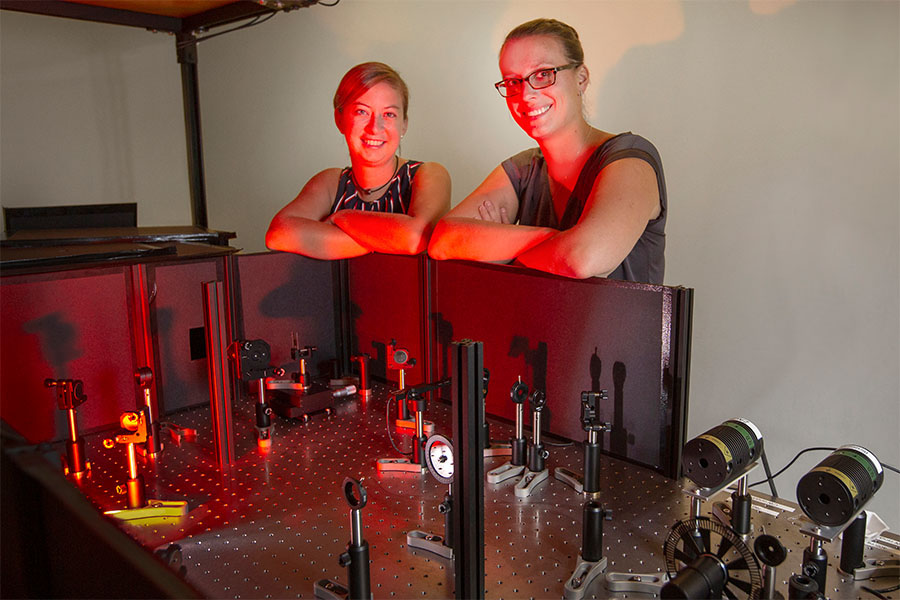Solid-state Upconversion for Photovalics and Infrared Sensing
This is a novel bulk-semiconuctor material that provides a new approach to photon upconversion. Infrared light is neither visible to the eye nor to silicon-based optoelectronic devices such as solar cells or cameras. Upconversion describes the process of converting low-energy infrared light into high-energy visible light, which can then be detected or used by optoelectronic devices. Upconversion in organic molecules stores energy in long-lived spin-triplet states which cannot be excited by incident light. Current, state-of-the-art upconversion devices involve metal-organic complexes and/or nanocrystals as sensitizers to absorb and funnel energy for collection. These devices are limited by poor exciton diffusion or large exchange energies between the singlet and triplet states.
To overcome these limitations, the current technology uses bulk-semiconductor thin films as sensitizers for the triplet state to achieve efficient upconversion based on triplet-triplet annihilation. The thickness of the film can be varies, which enables the shift of the threshold of efficient upconversion to subsolar incident powers. This approach foregoes the requirement of efficient singlet-to-triplet conversion in the sensitizer, enabling more efficient triplet sensitization.
This technology bears potential to overcome the Shockley-Queisser limit efficiency limit of solar cells. It additionally can find use in infrared sensing and photocatalysis.


